As a desert state, Arizona is known for its hot, dry climate and sunny days. But did you know that parts of Arizona get quite a bit of snow in winter?
I’ve lived in Arizona for over 15 years, and I can confirm – yes, it absolutely does snow here! In fact, some areas like Flagstaff average nearly 100 inches of snow per winter.
In this complete guide, I’ll give you the scoop on everything related to snow in Arizona. You’ll learn:
- The top places that get snowy in Arizona each winter
- What months have the best chance of snowfall
- Average winter temperatures and what to pack
- Where you can go skiing, sledding and play in the snow
- How snowfall impacts roads, schools and daily life
So, let’s dive into winter weather in the beautiful Grand Canyon state!
Where Does It Snow in Arizona?
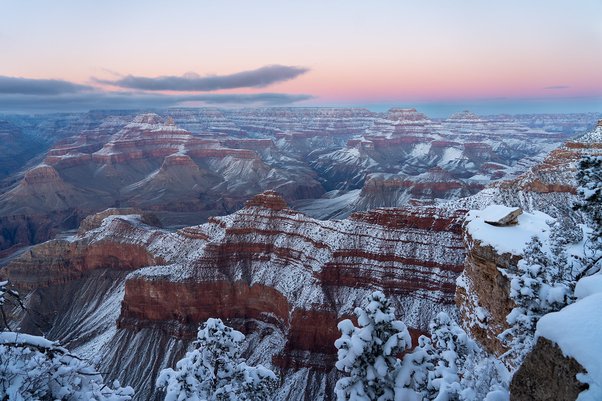
While the southern desert regions of Arizona rarely see snow, the northern half of the state has high elevations that lead to winter wonderlands each year.
Here are some of the top snowy spots in Arizona:
1. Flagstaff
Flagstaff earns its nickname as “Arizona’s winter city.” At an elevation of 7,000 feet, Flagstaff gets an average annual snowfall of over 100 inches!
Many massive storms dump over a foot of snow at a time, leading to snow-capped buildings, tree branches coated in white, and plows working overtime to clear the streets. Locals embrace the winter with skiing, sledding, ice skating and more.
2. Grand Canyon National Park
The Grand Canyon sees snowfall at both its North and South Rims, which sit at elevations between 6,900 and 8,000 feet. Snowstorms can hit the Canyon anytime between October and April, coating the ledges, paths and viewpoints in glistening white. Just be careful of ice if you’re hiking the trails!
3. Payson
The mountain town of Payson, nestled in Arizona’s Rim Country at 5,000 feet, gets its fair share of winter storms. Snowfall between November and March is common, with totals averaging around 5 to 6 inches per month.
4. Prescott
Prescott has charming log cabins, seasonal light displays and winter events that earn its nickname as “Arizona’s Christmas Town.” At 5,400 feet elevation, the Prescott area averages about 15 inches of snow per winter.
5. Sedona
The red rock wonders of Sedona are even more magical with a fresh blanket of snow! Sedona sits around 4,500 feet and usually sees a few minor snow storms per season that leave just an inch or two of accumulation.
6. Sunrise Park Ski Resort
Northeast Arizona is home to the popular Sunrise Park Ski Resort, which sits at an elevation of 9,200 feet. The high-country slopes here allow Arizona’s longest ski season, usually from mid-November through mid-April.
What Months Typically Have Snow in Arizona?
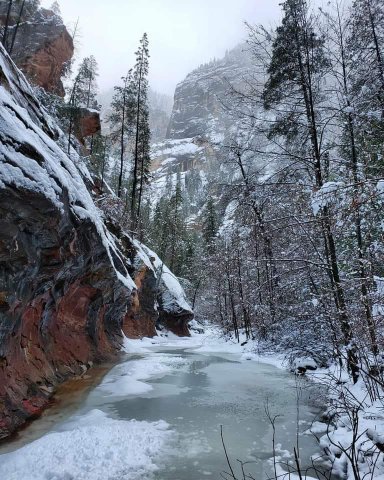
Most of Arizona’s snow comes during the “cold” months from November through March. However, snow can fall as early as October or even into April at the highest elevations.
Here’s a breakdown of typical snowy months in Arizona:
Tours & Things to do hand-picked by our insiders
October: Occasional early dustings are possible at ski resorts and rim country towns above 7,500 feet.
November: Mountain areas start seeing accumulating snowfall that marks the beginning of ski/snowplay season.
December & January: The peak of winter storm activity with heavy snows in northern Arizona.
February & March: Snow showers continue at high elevations. The ski season winds down in most spots by early April.
April: Spotty storms are still possible early in the month, especially at Sunrise Park Ski Resort.
What to Pack for an Arizona Snow Vacation
Heading to the snowy parts of Arizona? Be sure to pack proper attire for the cold!
Recommended clothing and gear includes:
- Coats & Jackets: Bring water-resistant outerwear rated for cold and snow. A warm parka is ideal.
- Gloves & Hats: You’ll want gear to keep your hands, ears and head protected. Opt for wool, fleece and windproof materials.
- Snow Boots or Winter Hiking Shoes: Waterproof footwear with good traction is a must for snow play.
- Thermal Under Layers: Silk, wool or synthetic base layers help regulate body temperature.
- Scarves, Socks & Cold Weather Gear: Round out your winter apparel with other insulating items as needed.
You may be able to rent ski/snowboard gear if you plan to hit the slopes!
Average Winter Temperatures in Arizona
As you plan your Arizona vacation, be sure to check the forecast for your destination to know what to expect.
These charts show average winter low and high temps in key areas:
Certainly! Here’s the corrected table:
Phoenix
| Month | Avg High (F) | Avg Low (F) |
|---|---|---|
| December | 68°F | 47°F |
| January | 69°F | 49°F |
| February | 72°F | 51°F |
Flagstaff
| Month | Avg High (F) | Avg Low (F) |
|---|---|---|
| December | 44°F | 15°F |
| January | 42°F | 16°F |
| February | 45°F | 18°F |
Grand Canyon South Rim
| Month | Avg High (F) | Avg Low (F) |
|---|---|---|
| December | 40°F | 20°F |
| January | 40°F | 17°F |
| February | 42°F | 19°F |
Keep in mind these are just averages – actual temps may be warmer or cooler based on current conditions. Check forecasts regularly for your travel dates!
Where to Go Skiing and Snowboarding
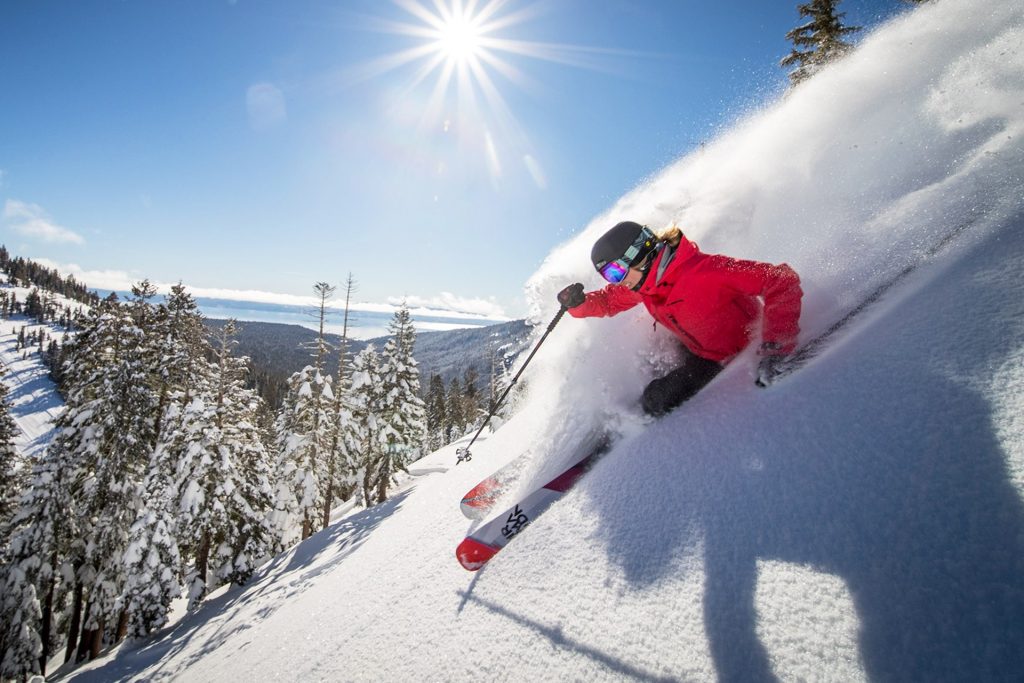
Did you know Arizona has multiple ski resorts? When people think desert + cactus, ski slopes don’t often come to mind – but we’ve got great options here!
Top Ski Resorts in Arizona
- 65+ runs ranging from beginner to expert
- Terrain Park and half pipe
- 11 lifts across three peaks
Arizona Snowbowl
- 43 trails plus terrain park
- 7 chair lifts and 2 surface lifts
- Night skiing until 9pm
Mount Lemmon Ski Valley
- 28 runs from beginner to expert
- Steepest run has 51 degree pitch!
- Located in Coronado Nat’l Forest
Most resorts open by late November and run through March or April. Exact dates are weather dependent.
Check individual resort websites for up-to-date conditions, ticket rates and operations schedules before planning your winter getaway!
Where to Go Sledding, Tubing and Snow Play
Beyond ski resorts, there are endless snow play zones across northern Arizona once the snow starts falling!
Popular snow activities include:
Sledding – Classic downhill fun on snowy slopes
Tubing – Zip down groomed lanes at snow parks
Building Snowmen – Roll giant snowballs to stack + decorate
Snowball Fights – Duck and throw flurries of snowballs at friends
Cross-Country Skiing – Glide along snow-covered backcountry trails
Great areas to enjoy snow games include:
- Flagstaff Snow Park
- Mormon Lake
- Williams Snow Play Zone
- Inner Basin at Humphrey’s Peak
- Snowbowl Nordic Center
Check for snow play area rules, sled requirements and seasonal opening schedules before heading out. And bundle up – that snow is cold!
Seeing Snow at Arizona Icons
Beyond winter sports, one of the most magical parts of Arizona snow is seeing it dust iconic landmarks!
Popular sites like these take on a totally different character with fresh powder:
Sedona Red Rocks
The towering red rock formations surrounding Sedona appear even more vivid against the pure white snow. Even just a couple inches can set the perfect wintry scene!
Grand Canyon
Seeing snow frost the Grand Canyon’s cliffs and North/South Rim viewpoints is breathtaking. Just be careful hiking if trails and pathways get slippery!
Saguaro Cacti
Watching snow blanket Arizona’s signature saguaro cacti is such a fun, oddly satisfying sight. The contrast of prickly green giants topped in white is almost cartoonish!
Horseshoe Bend
This scenic Colorado River meander near Page often sees light snow, which makes photographing it feel extra peaceful and quiet.
Antelope Canyon
The already gorgeous, wave-like walls of Antelope Canyon become even more magical, dusted in snowy crystals and filtering light beams down through openings above.
So if you’re traveling Arizona in winter, keep an eye out for snow dressing up natural wonders into seasonal masterpieces!
How Snowfall Impacts Roads, Schools and Daily Life
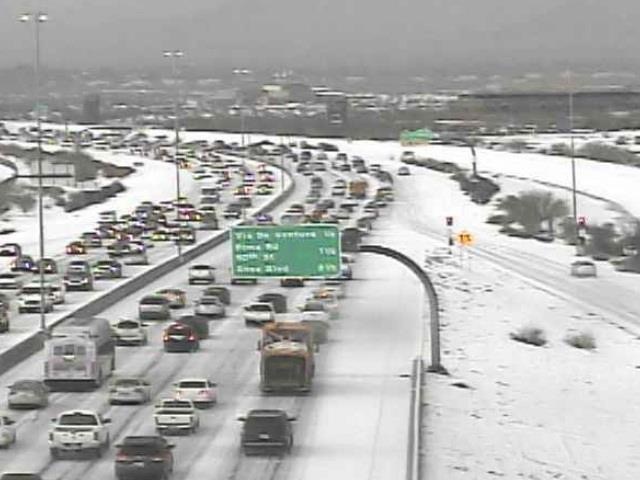
While snow is beautiful, it can cause hassles and closures until it melts or gets plowed away.
Road conditions worsen dramatically during storms, and interstates can temporarily close due to low visibility, accidents or stuck vehicles. Chains, 4WD or snow tires may be required in impacted areas. Watch signage carefully.
Many northern Arizona schools and universities issue snow days – particularly in Flagstaff where big storms can drop several feet. Online learning helps minimize cancellations now, but snow still necessitates occasional off days.
Flight delays are also common with poor weather. Connecting travelers may need to allow extra layover time in case snow alters Phoenix/Sky Harbor schedules.
When snow sticks around awhile, it also gives Arizona kids rare chances for sledding, snowmen and epic snowball fights! Just be ready to eventually dig cars and scrape windshields when it’s time to shovel out and hit the road.
So in short: snow transforms life in AZ temporarily with both splendor and hassles until the heat returns. Locals handle it with preparation, caution and making the most of the wonderland scenes!
Does It Snow in Phoenix?
While the desert city of Phoenix only sees snow flurries a few times per decade, northern suburbs like Cave Creek and Carefree at higher elevations occasionally get dustings.
Overnight freezes happen more often, requiring Phoenicians to protect frost-sensitive plants by covering them when the mercury dips. But accumulations usually melt rapidly under sunny skies heating back above 60°F by midday.
So while mountain ranges nearby may don white hats after storms, snow rarely sticks long in America’s 5th largest city. The Valley of the Sun earns its nickname with warm winters perfect for golf, hiking, biking and outdoor festivals enjoyed by snowbirds who flock here for a break from winter’s bite!
Experience Arizona’s Snowy Side!
So there you have it – contrary to popular belief, YES, parts of Arizona do transform into stunning snowy scenes each winter!
I hope you enjoyed this overview detailing everything you need to know about snow in the Grand Canyon state.

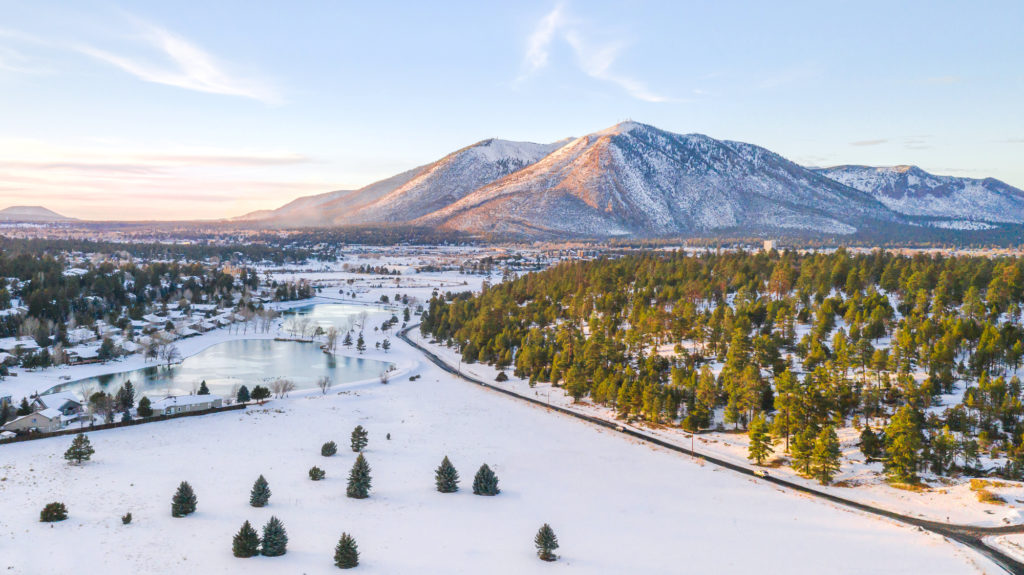
![All The Best Hikes In Bora Bora [+Tips] [year] 11 All The Best Hikes In Bora Bora [+Tips] 2024](https://travelcrog.com/wp-content/uploads/2023/08/best-hikes-in-bora-bora-1.jpg)

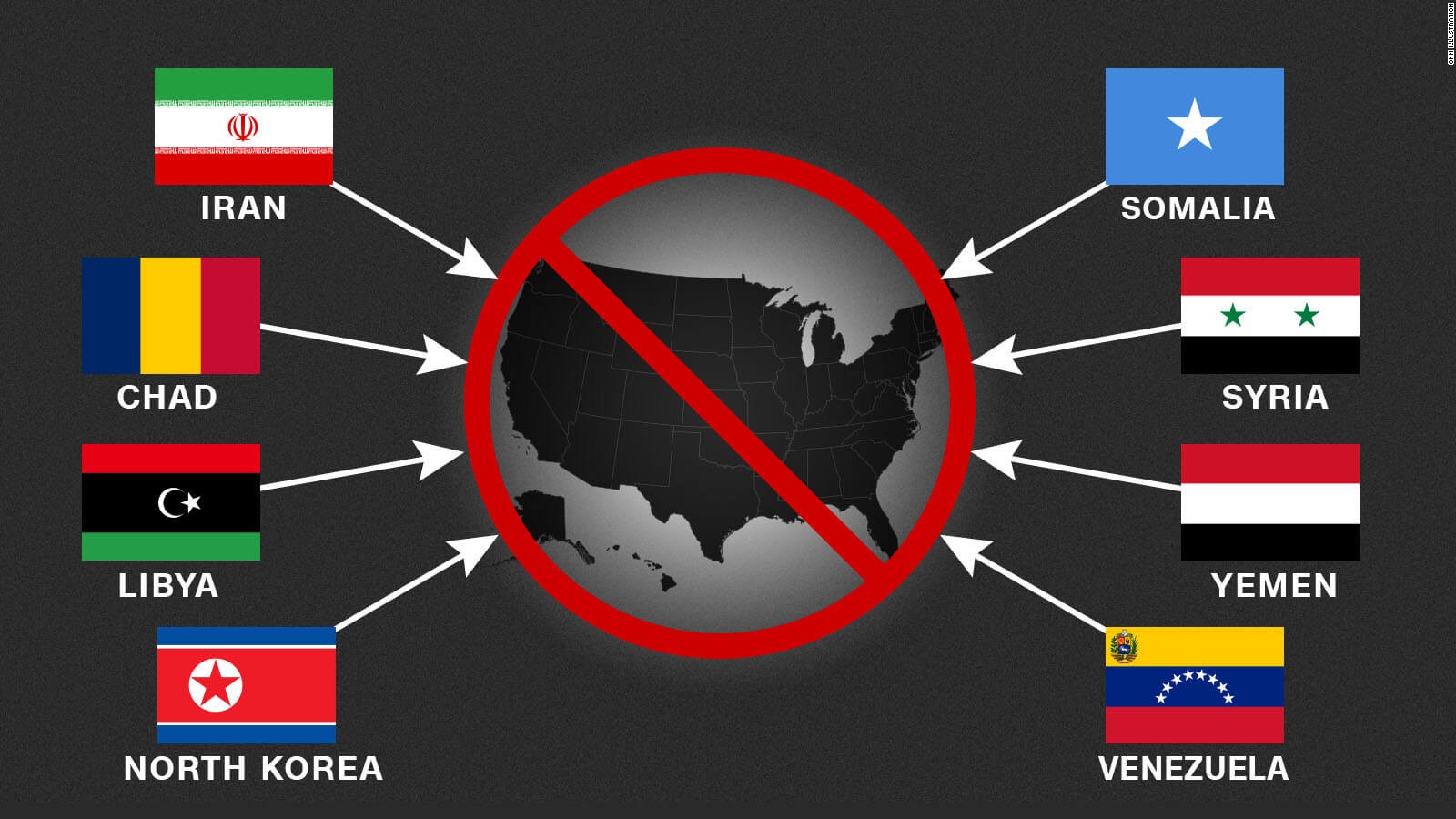
![50 Best Things to do in Los Angeles in [Year] 14 50 Best Things to do in Los Angeles in [Year]](https://travelcrog.com/wp-content/uploads/2024/04/Things-to-do-in-Los-Angeles.webp)
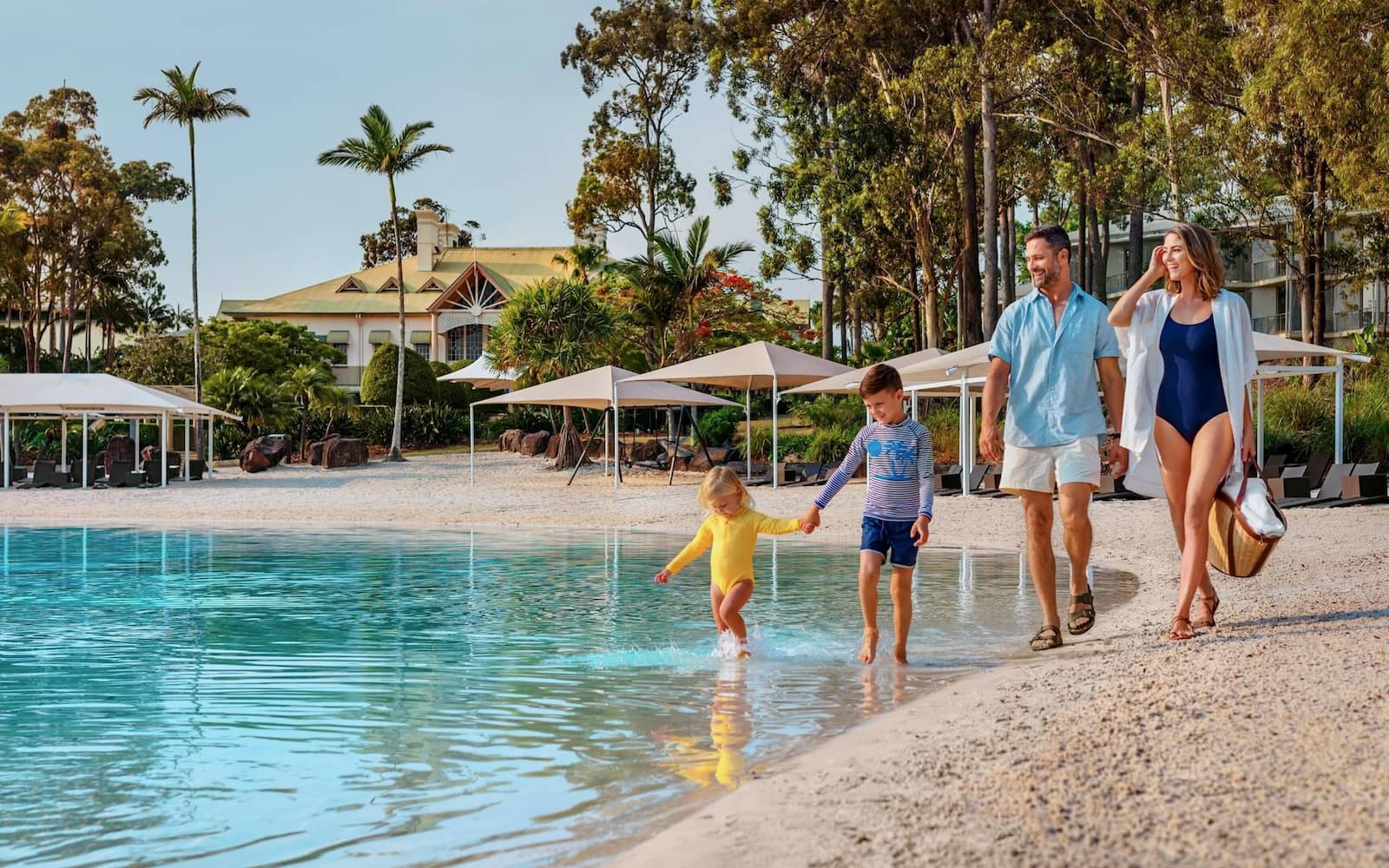
![Best Bora Bora Historical Tours: [year] Fun Activities 16 Best Bora Bora Historical Tours: 2024 Fun Activities](https://travelcrog.com/wp-content/uploads/2023/08/Best-Bora-Bora-Historical-Tours-Fun-Activities.webp)
Leave a Reply